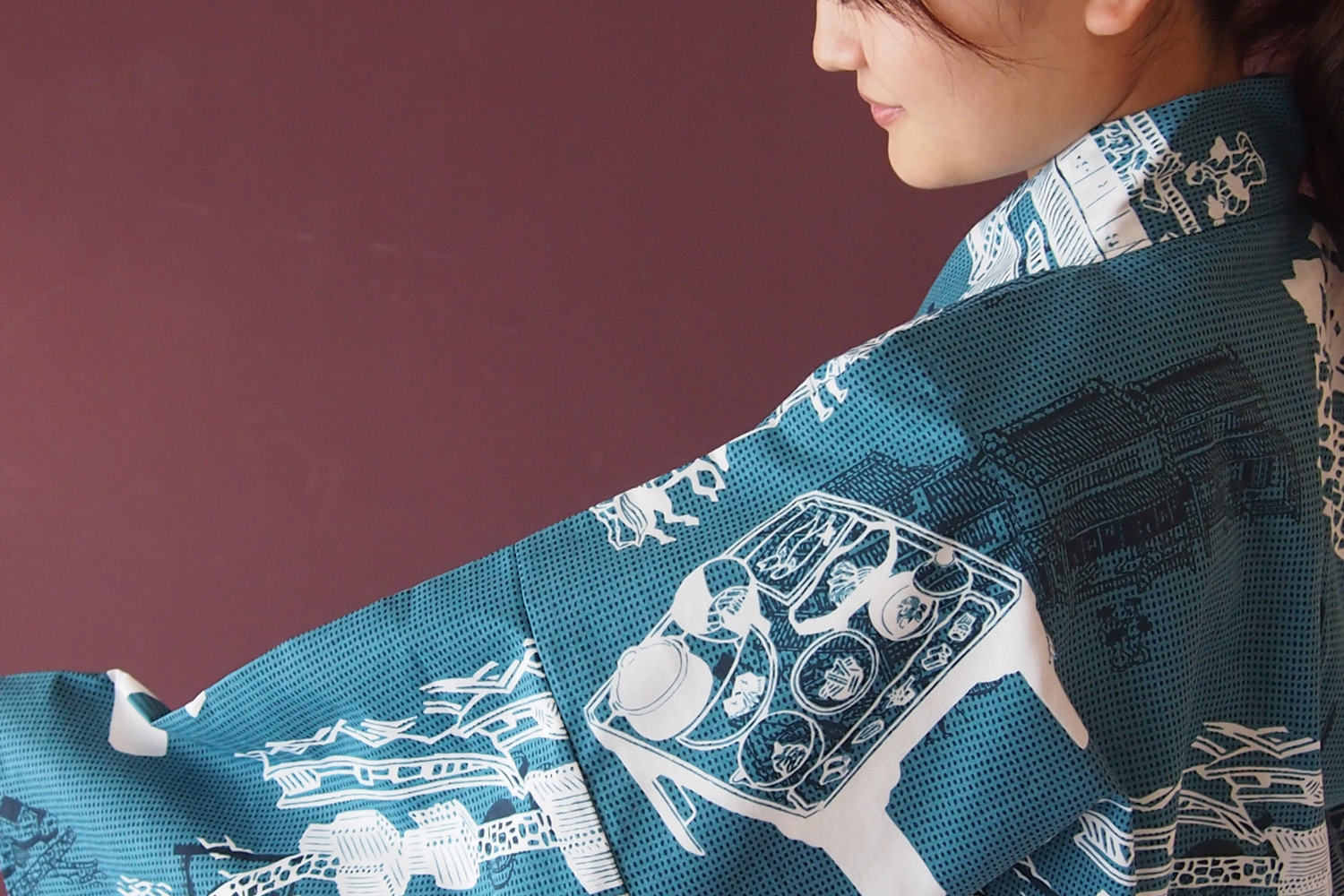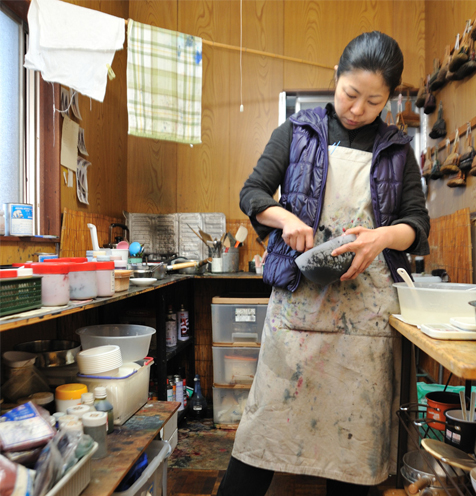小倉 充子 × ART RYUMEIKAN TOKYO
おぐら浴衣
私は図案をつくる時、想いは必ず江戸の町へ飛ぶ。
ものつくりの端くれとして、また江戸っ子の末裔として、江戸の美学から学ぶことはあまりに多い。封建社会の抑制と不安の中で、それでも人には意気地があり、町には風が吹き、魂には自由があった。時代は流れ、人も町もすべてが変わってしまったけれど、魂は、細々とではあれ、脈々とこの東京に繋がっていると感じる。
そしてその魂を、ここ龍名館にも感じたのである。この度、龍名館の新しい浴衣の図案を制作するにあたり、所縁のモチーフでそれを描き出したいと思った。
龍名館付近より臨んだ在りし日の呉服橋御門に現在の日本橋。江戸の町並み。一石橋手前、呉服橋側の日本橋西河岸。江戸時代、日本橋川の両岸は河岸が設けられ、江戸物流の拠点として全国から荷が運ばれ、大変な賑わいであった。そして客人をもてなす御膳に酒に火鉢、煙草盆。町並みには旅人で賑わう旅籠龍名館を、御膳は花ごよみの会席料理を配し、洒落てみた。
この浴衣をまとった方に、江戸から龍名館へ吹いてくる風の匂いを、ふと感じて頂ければと思う。
<商品説明>
小倉染色図案工房 小倉充子氏デザインのおぐら浴衣。
ホテル龍名館東京のために、ホテル龍名館東京に宿泊し、呉服橋の地をテーマにデザインしてもらった、オリジナルデザイン。
ホテル龍名館東京が面する外堀通りはかつて丸ノ内と外を隔てる大きな堀であり、現在の呉服橋交差点の場所に、呉服橋が架けられていた。幕府御用達の呉服商が沢山あったことから呉服橋の名が付いたと言われている。江戸城を中心とし、濠が多く見かけられる地域であったが、戦後に埋め立てられ、現在は交差点となり、その名前を残すのみとなっている。
ART RYUMEIKAN TOKYOでは、アーティストはもちろん、地域の価値を大切にすることを目的に、今回古き良き呉服橋、そしてその周辺の地域を、各文献を参考に小倉氏にデザインいただきました。また、老若男女問わない色やデザインは、小倉氏が実際にホテル龍名館東京に宿泊いただき、ホテルの空間にも合うものを製作いただいた。
この浴衣はホテル龍名館東京の客室に置いております。ご希望の方はご宿泊の際にリクエスト下さい。販売も行っております。


Artist
小倉 充子
江戸型染作家
1967年 東京神田生まれ
1994年 東京藝術大学大学院美術研究科デザイン専攻修了。
染色家 西耕三郎氏に師事、江戸文化、型染を学ぶ
1997年 「小倉染色図案工房」として独立。
浴衣、手拭い、下駄鼻緒、暖簾など様々な型染作品の企画、制作。
図案、型彫り、染めまでほぼ一貫しておこなう。
1967年 東京神田生まれ
1994年 東京藝術大学大学院美術研究科デザイン専攻修了。
染色家 西耕三郎氏に師事、江戸文化、型染を学ぶ
1997年 「小倉染色図案工房」として独立。
浴衣、手拭い、下駄鼻緒、暖簾など様々な型染作品の企画、制作。
図案、型彫り、染めまでほぼ一貫しておこなう。